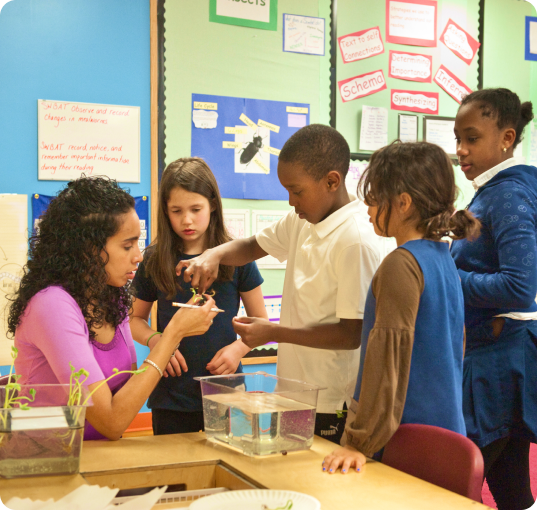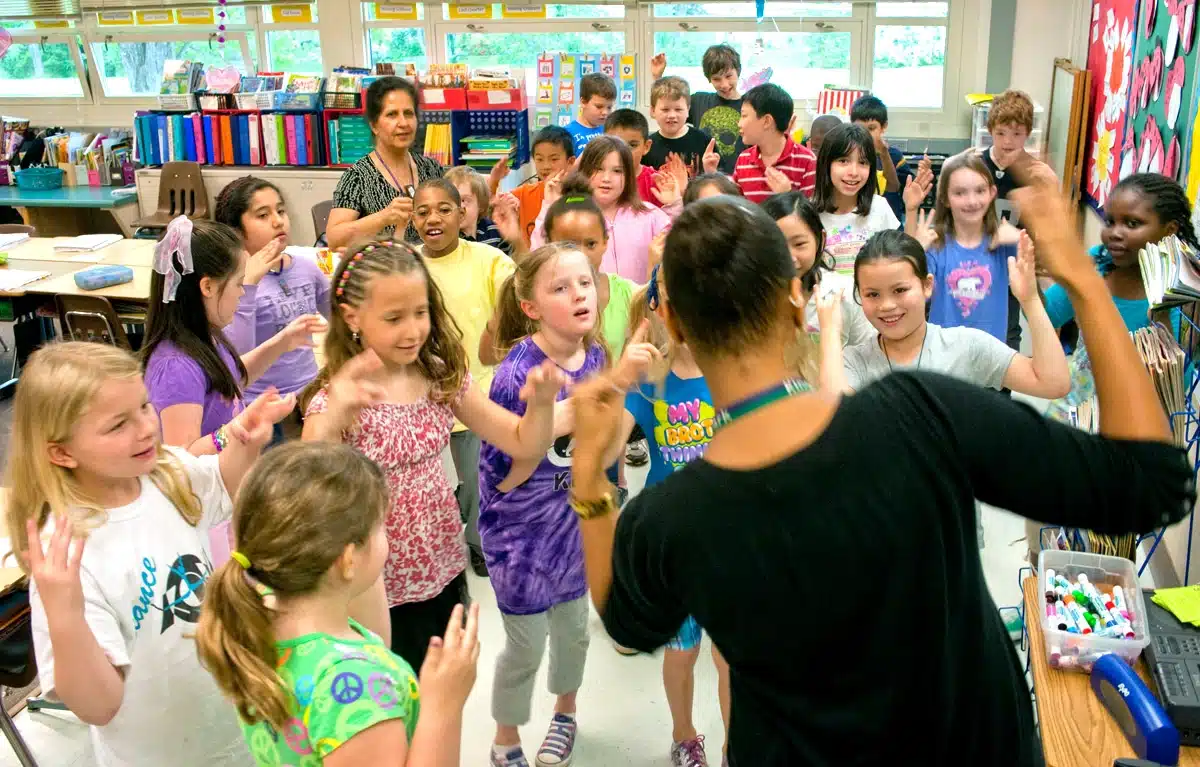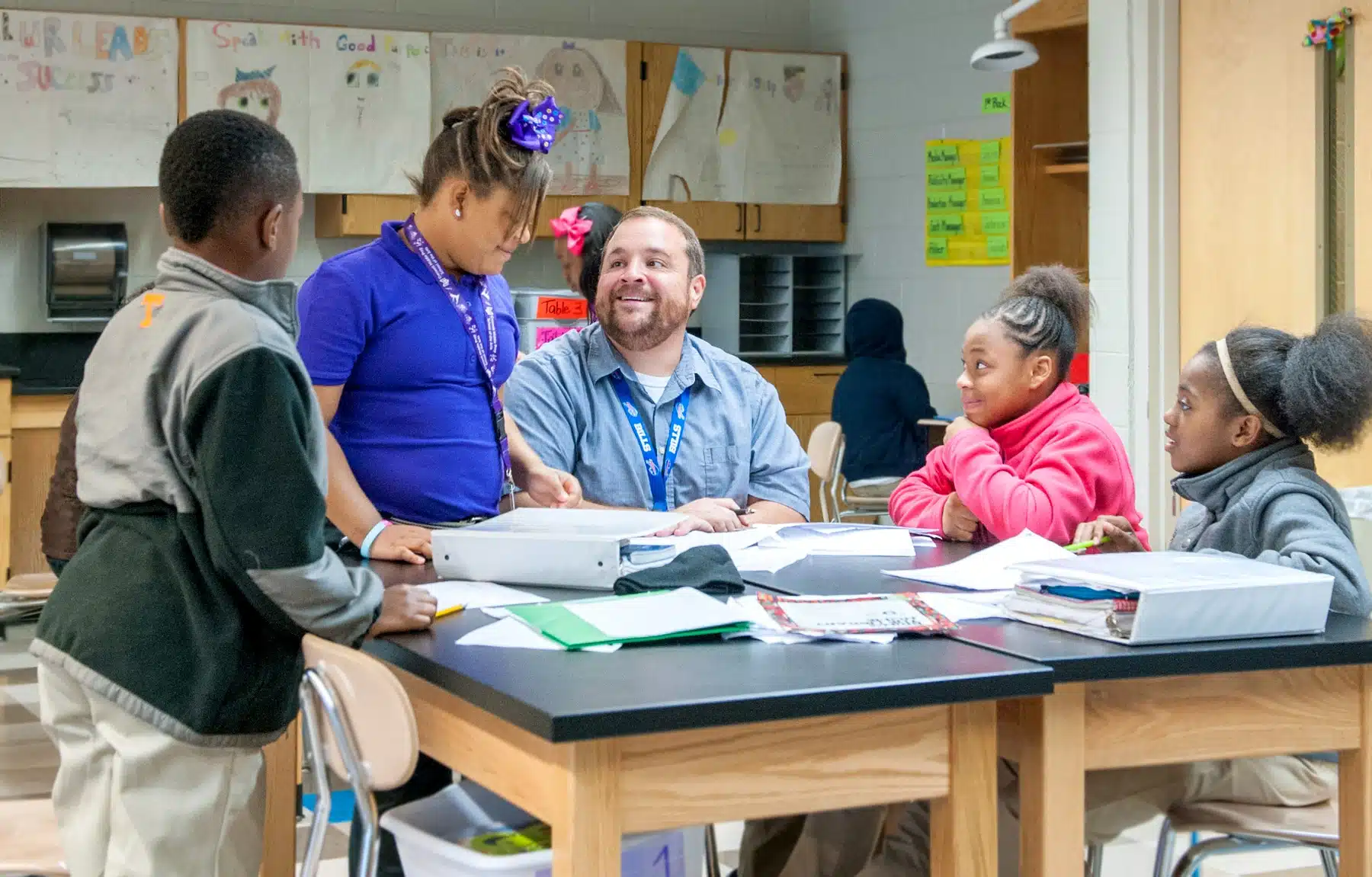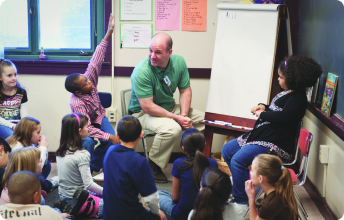The Responsive Classroom approach integrates engaging academics with social-emotional learning, providing educators with practical strategies to build positive and inclusive school communities. Backed by research, this approach enhances student achievement, boosts teacher satisfaction, and supports effective classroom management through clear and consistent practices.
At the heart of the Responsive Classroom approach lies a core belief: In order to be successful in and out of school, students need to learn a set of social and emotional competencies — cooperation, assertiveness, responsibility, empathy, and self-control—and a set of academic competencies — academic mindset, perseverance, learning strategies, and academic behaviors.

Discover the principles shaping our transformative teaching approach.
Teaching social and emotional skills is as important as teaching academic content.
How we teach is as important as what we teach.
Great cognitive growth occurs through social interaction.
How we work together as adults to create a safe, joyful, and inclusive school environment is as important as our individual contribution or competence.
What we know and believe about our students — individually, culturally, developmentally — informs our expectations, reactions, and attitudes about those students.
Partnering with families — knowing them and valuing their contributions — is as important as knowing the children we teach.

In the early years, we focus on building cooperation, assertiveness, responsibility, empathy, and self-control. These primary practices create a foundation for positive and collaborative learning, setting the stage for academic and personal success. Explore more about Morning Meeting, energizers, closing circles, and more.

As students progress, we expand our approach to include academic competencies—academic mindset, perseverance, learning strategies, and academic behaviors. These secondary practices ensure a holistic educational experience for middle and high school students, fostering growth and achievement. Explore Responsive Advisory Meeting, brain breaks, active teaching, and more.

Our shared practices emphasize collaboration and shared responsibility among educators. By fostering a sense of community, we contribute collectively to creating a safe, joyful, and inclusive atmosphere for every student. Learn how positive teacher language, Interactive Modeling, logical consequences, and interactive learning structures create success for learners of all ages.
Elevate your teaching with our transformative professional development services. Explore tailored workshops and resources designed to foster joy, safety, and engagement in your classrooms. Ignite growth and excellence in education with Responsive Classroom.
Bring our training to your school or district. Receive resources and tools to help you assess progress and further develop essential teaching skills.
Experience an introduction to the approach or deepen your learning after completing a four-day course.
Unlock a wealth of insights by delving into real-world success stories. Discover how educators nationwide have transformed their classrooms with Responsive Classroom.
“Classroom management is an area I struggled with in the past, and this year, it has already gone so much better.”
— Molly, grade 6 teacher
"We knew where we wanted to go but had no idea how to get there. Finding Responsive Classroom gave us the roadmap and a car.”
— Rita, principal
“The best teacher training and teacher support program I have ever participated in.”
— Neva, Kindergarten teacher